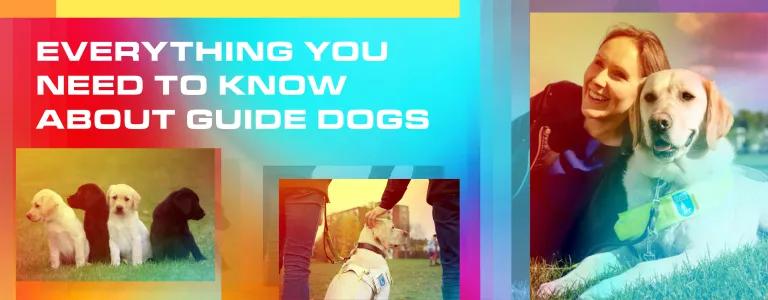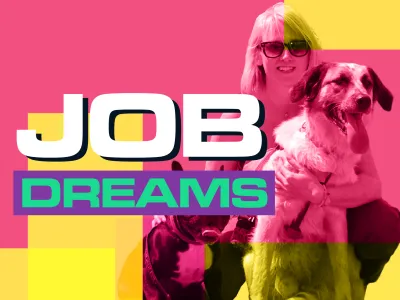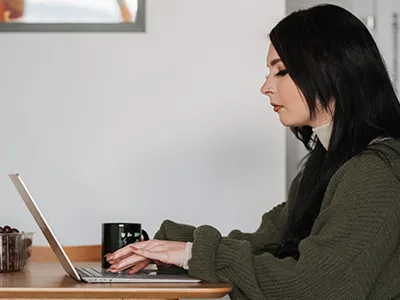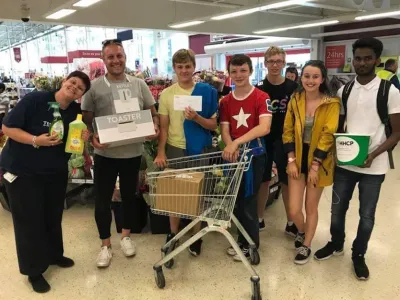
Everything You Need To Know About Guide Dogs
It’s National Guide Dog Day! And to celebrate these awesome furry friends, we’ve teamed up with The Guide Dogs For The Blind Association, who are here to tell you everything you need to know about guide dogs. From what they do, how they’re trained and why they’re so important. Here’s what they have to say…
As a charity, we’ve come a heck of a long way since the UK’s first guide dogs were trained in the Wallasey area of Liverpool in 1931. Back then, four dogs – Meta, Folly, Flash and Judy – were partnered with veterans who were blinded in the First World War. Now, in 2021, we’re celebrating the 90th anniversary of these first partnerships by looking forward to helping people with sight loss into the next 90 years and beyond.
We have 5,000 guide dogs working across the UK right now, with each of them having spent around 18 months to two years in training. We breed all our own dogs and most of them are born in volunteers’ homes, while some start life at our National Centre in Leamington Spa, Warwickshire.
When they’re six weeks old, our puppies spend a week at the centre where they’re health checked, given their first vaccines, and assessed to find out more about their personality. From there, the pups go to live with volunteers called Puppy Raisers.
These volunteers teach the young dogs basic obedience skills and get them used to the sights, sounds and smells of the big, wide world. It’s important for our puppies to get used to all the environments that they might find themselves in when they’re a working guide dog, including public transport, shops, restaurants and offices.
When the pups are 12-14 months old, they start their formal guide dog training. The first stage, which lasts roughly 12 weeks, gives them the basics of guiding skills such as avoiding obstacles and navigating kerbs, plus it gets each dog used to wearing a harness.
The second stage, around 16-19 weeks, builds on and reinforces our dogs’ guiding skills. This is also when the trainer, called a Guide Dog Mobility Specialist, will think about what kind of person each dog will be a good match for. All sorts of things are taken into account like how fast the person walks, how tall they are, and how often they’ll need to get out and about. Finally, each dog and their new owner are trained together for around four weeks to make sure they’re a good partnership.
Other interesting things you may not know about our guide dogs and their training:
- When walking in harness with their owner, our guide dogs are taught not to try to get through gaps that they don’t think both of them can get through together
- We also teach them intelligent disobedience, where they will ignore commands from their owner to move forward if there’s something that could be of danger nearby
- There’s no age limit on having a guide dog. Our youngest ever guide dog owner was 11, and our oldest owners are in their 90s
- You don’t have to be completely blind to have a guide dog. In fact, most people who are registered blind or partially sighted have some usable vision
- One job at Guide Dogs is quite possibly the coolest ever – puppy midwife! We have a small but specialist team who help our guide dog puppies make their way into the world, based at our National Centre
Of course we’re well known for the guide dogs that you see out and about but these days, we help people who are blind or partially sighted to live the life they choose in many other ways.
Another service we offer is called My Sighted Guide. We teach volunteers guiding skills, then match them up to someone with a vision impairment local to them. Each volunteer helps their partner to develop confidence in getting out and about in their local community, with the added benefit of making a new friend.
In recent years, we’ve supported children and young people with sight loss, and their families, in a few different ways to ensure they can reach their full potential in life.
One of these services is called buddy dogs. This gives anyone aged up to 25 with a vision impairment (and their family) the chance to enjoy the benefits and friendship of a well-behaved dog. Having a buddy dog increases confidence, which can help a child or young person to improve their relationships with others, and gives them a sense of fun and trust – both in themselves and their dog.
We also have services for children and young people that help with the practical skills they’ll need to get around, with finding the right support at nursery, school or college, with getting the right help at home, or simply with enjoying a day out with their family where they can meet others going through the same things.
To help us change the lives of people with sight loss, we rely on help from a family of volunteers that is thousands strong. From the puppy raisers mentioned above, to those who write to their MP about our campaigning work, to those who do wonderful things to raise money for us, there’s a variety of ways to get involved with Guide Dogs as much or as little as you like.
To find out more, visit our website.




